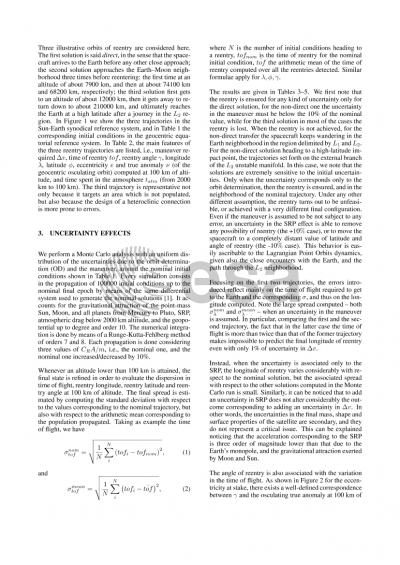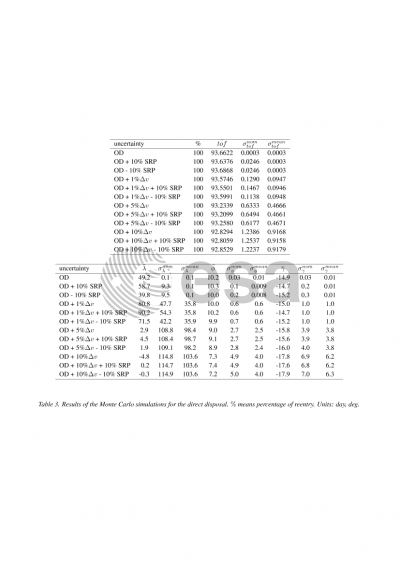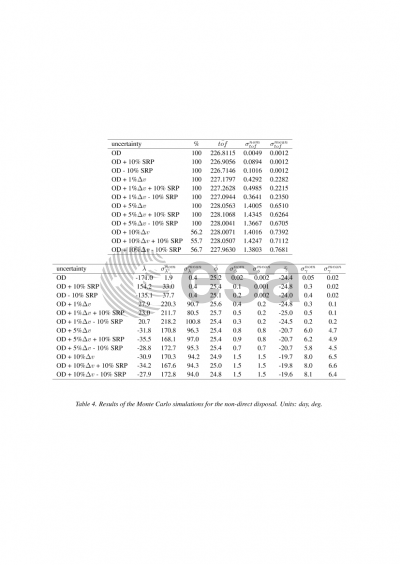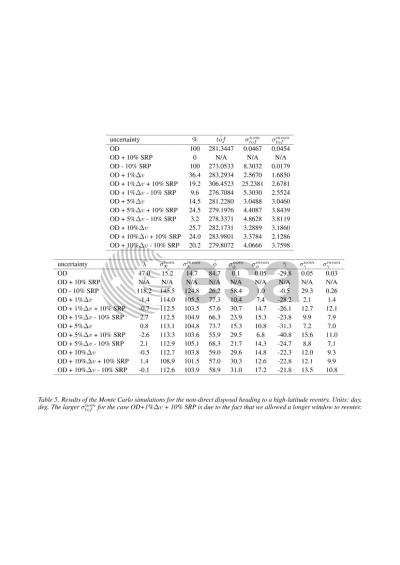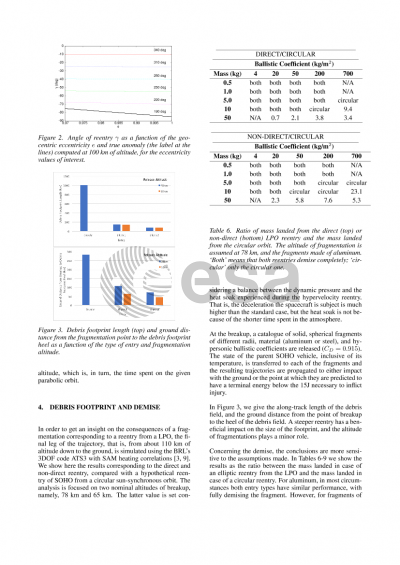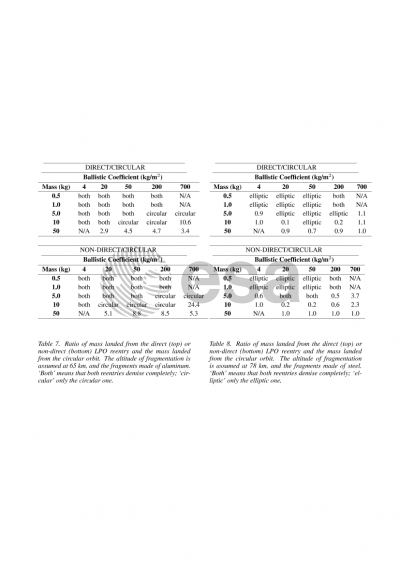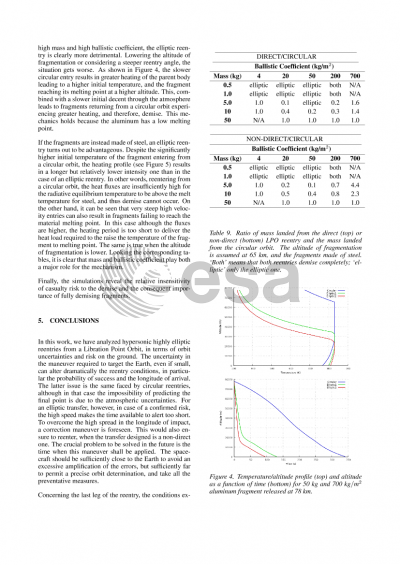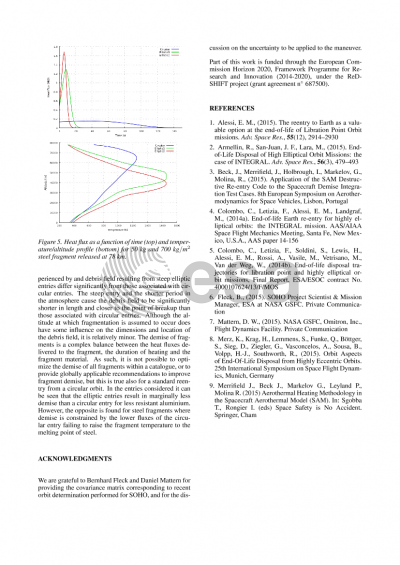Document details

Abstract
The Solar & Heliospheric Observatory (SOHO) mission is a joint ESA-NASA project devoted to the study of the solar environment. Launched in 1995, it is currently orbiting around the Sun on a nominal L1 halo orbit with an out-of-plane amplitude of about 120000 km.
Different re-entry to Earth solutions have been computed for the end-of-life of SOHO, proving that this disposal strategy is feasible in terms of Delta v-budget and operational time. The atmospheric uncertainties playing a major role in the re-entry from LEO are secondary for Libration Point Orbits (LPO), because of the higher speed of re-entry and the lower number of excursions through the atmosphere in the latter case. Moreover, while re-entries from LEO, but also HEO, (as shown by the re-entry maneuvers implemented for INTEGRAL and Cluster) take years to be accomplished, the trajectories computed for LPO missions last less than 1 year.
The criticality of an LPO re-entry procedure lies in the characteristic chaoticity of this kind of orbits. Thus, this work also addresses the role of possible uncertainties arising from the orbit determination, the maneuver efficiency, and the parameters of the spacecraft determining the effect of the solar radiation pressure (SRP). Indeed, the SRP is the main orbital perturbation acting on the spacecraft in this orbital regime.
The general assumption made is that the orbit of the spacecraft is well determined up to the application of the maneuver, i.e., that the uncertainty in position is of the order of dozens of m, and the one in velocity of some mm/s. The uncertainty in the maneuver is set both in modulus and direction up to the 10% of the nominal value. Finally, the coefficient C_R*A/m associated with the SRP effect is also denoted by an uncertainty up to the 10% of the nominal value.
By means of a Monte Carlo analysis, an estimation of the probability of re-entry, of how the longitude and latitude corresponding to the re-entry location could spread over the surface of the Earth, and of how the re-entry angle might change are given. Three re-entry trajectories (a direct one, and two performing a fly-by with the Earth before the final re-entry) are tested. The outcome is presented trying to highlight the possible strength of the nonlinearity and the robustness of a nominal solution in terms of orbit design, e.g., if a direct reentry will subsist under a given uncertainty.
In the actual framework of a sustainable usage of the space environment, the outcome will pave the way towards an effective assessment of the risk associated to hypervelocity re-entries. As the aforementioned INTEGRAL and Cluster cases show, the re-entry is being considered as the most beneficial passive safeguard for the space debris problem, also for satellites orbiting beyond the LEO region. There exist only recent studies on the dynamics and the physics corresponding to hypervelocity re-entries, and this is why the work presented is innovative in the field.
Preview


